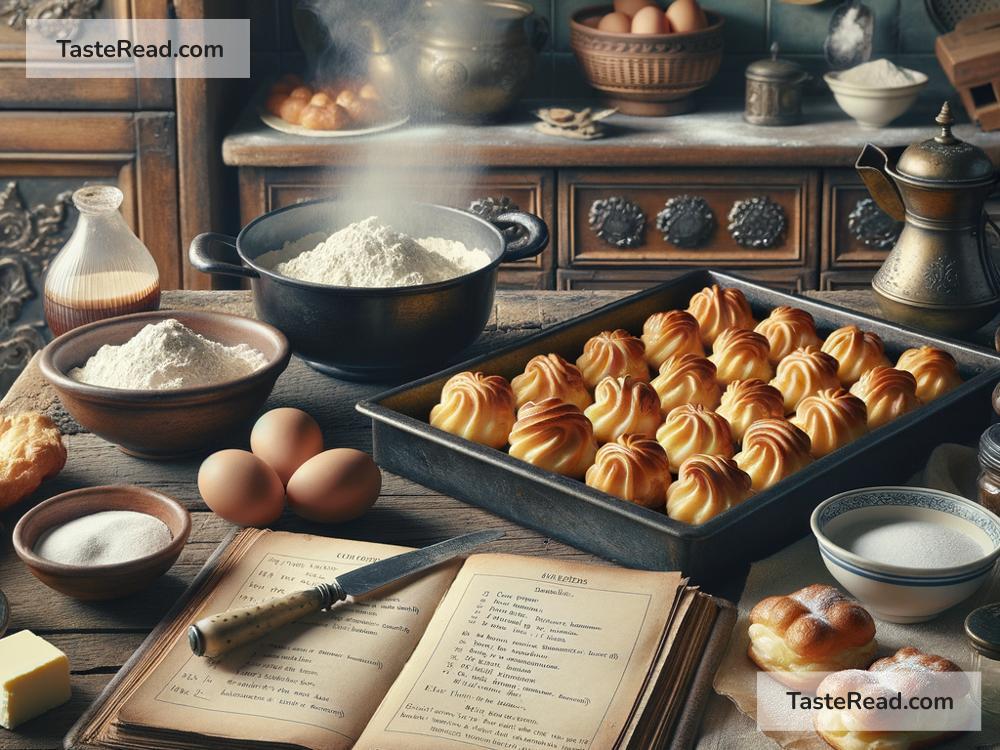The Sweet History of the Profiterole: Origins in Folklore
Profiteroles, those delightful little cream-filled pastry puffs, have become beloved treats all around the world. They’re often drizzled with chocolate sauce, filled with whipped cream or custard, and served during celebrations or as dessert. While we know profiteroles as part of French cuisine today, their origins go far back in time—even deeper into folklore and history. Let’s explore where these sweet puffs came from and how they became such a popular dessert.
What Are Profiteroles?
Before diving into their history, let’s understand what a profiterole is. Profiteroles are made using a type of dough called “pâte à choux” (pronounced paht-a-shoo), or choux pastry. This dough is unique because it puffs up dramatically when baked, creating hollow centers perfect for filling with cream, ice cream, or custard. The finished pastry is typically topped with chocolate sauce, powdered sugar, or caramel.
Profiteroles are sometimes confused with other desserts like éclairs, which are larger and typically shaped like oblong fingers. However, profiteroles are bite-sized, round, and have their own special charm.
Folklore and the Origins of Profiteroles
The origin of profiteroles is steeped in folklore and history, connecting myths, legends, and real-life culinary innovations. While no one knows exactly who made the first profiterole, there are fascinating stories from Europe that tell of its rise.
1. The Early Days of Choux Pastry in Italy
One popular tale traces the birthplace of profiteroles to Italy during the Renaissance. Catherine de Medici, a notable figure from Italian history, is said to have introduced choux pastry to France in the 16th century. Catherine married King Henry II of France in 1533, bringing with her chefs who were experts in Italian cooking. These chefs were believed to have developed the precursor to pâte à choux while experimenting with light, delicate pastries.
At the time, these pastries were not filled or decorated with chocolate as they are today. In fact, they were simple puffs, enjoyed on rare occasions. The name “profiterole” is thought to derive from the French word “profit,” which refers to a small, valuable reward. In essence, profiteroles started as tiny treats given as “gifts” during festive, celebratory moments.
2. French Culinary Refinement
While Italy started the journey, France perfected it. Folklore suggests that profiteroles became popularized in the royal courts of France, thanks to the skilled chefs there. Among the most famous contributors to this pastry’s evolution was François Pierre de La Varenne—a chef who wrote one of the first French cookbooks, Le Cuisinier François, in 1651.
La Varenne was one of the earliest chefs to refine choux pastry into a form closer to what we know today. His work inspired future generations of pastry chefs to experiment with fillings, adding cream and sauces to elevate the profiterole from a simple puff to a luxurious dessert fit for royalty.
3. Mythical Connections to Celebration and Traditions
In folklore, the profiterole was not simply a dessert but a symbol of joy and prosperity. Some stories suggest that profiteroles were served at weddings or major feasts to symbolize abundance. The round shape of the pastry was said to represent completeness and unity, while the hollow center implied hidden treasures.
Further folklore says that profiteroles were inspired by ancient bread-baking traditions across Europe. Centuries ago, bakers believed that hollow bread rolls held spiritual significance, representing the connection between the heavens and earth due to their light, airy texture. Profiteroles, with their delicate puffed dough, may have carried on that tradition in sweet form.
4. Chocolate Makes Its Entrance
Chocolate, as delicious as it is, didn’t become a part of profiteroles until much later. Folklore and historical evidence suggest that chocolate sauce was introduced to desserts primarily after the colonization of the Americas in the 1500s, when cacao beans were brought to Europe. As chocolate gained popularity in European kitchens, chefs began experimenting with drizzling melted chocolate over pastries, profiteroles being one of them.
The addition of chocolate further elevated profiteroles, transforming them into a dessert sensation that could be enjoyed by nobles and commoners alike.
Profiteroles in Modern Times
Today, profiteroles are enjoyed worldwide. They’ve evolved from being symbols of prosperity in folklore to becoming part of everyday celebrations. Whether served at weddings, birthday parties, or fancy dinners, profiteroles remind us of how food connects us to history, tradition, and joy.
The dough itself remains a culinary masterpiece, requiring skill to create. However, profiteroles have become accessible for home bakers too, with recipes readily available online and in cookbooks. Their classic pairing of cream and chocolate continues to delight, but modern versions use innovative fillings like ice cream, caramel, or even savory ingredients like cheese.
Conclusion
The history of profiteroles, though partly rooted in folklore, demonstrates how food can evolve across centuries and cultures. From their beginnings as tiny bread-like puffs in Renaissance Italy to their refinement in France’s royal kitchens, they’ve traveled an incredible journey to become a favorite dessert around the globe.
So the next time you bite into a profiterole, remember: you’re tasting centuries of culinary creativity and sweet storytelling. It’s a dessert that carries with it a legacy of tradition, imagination, and, most importantly, enjoyment.


